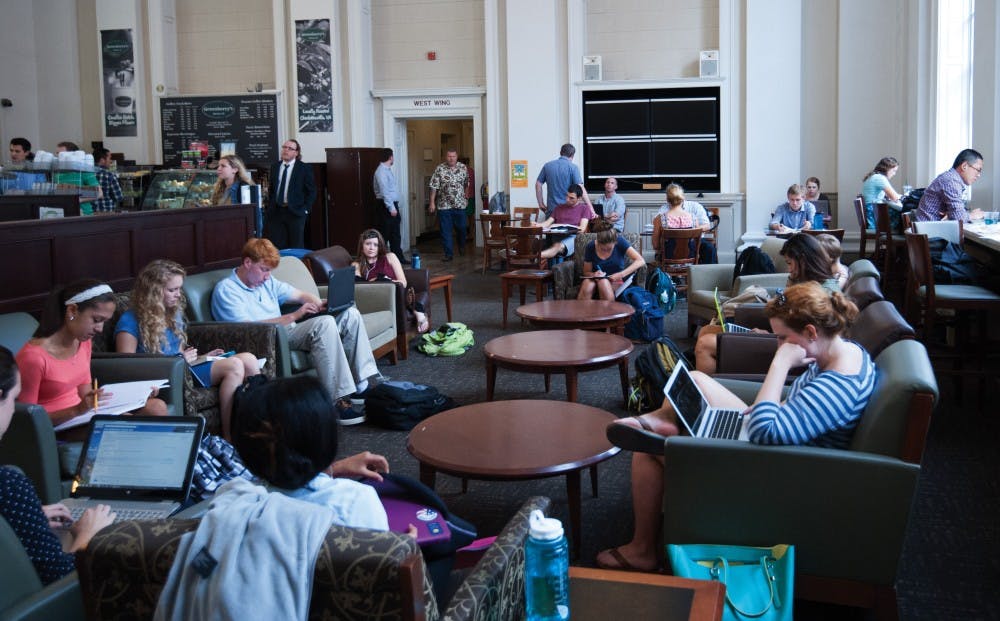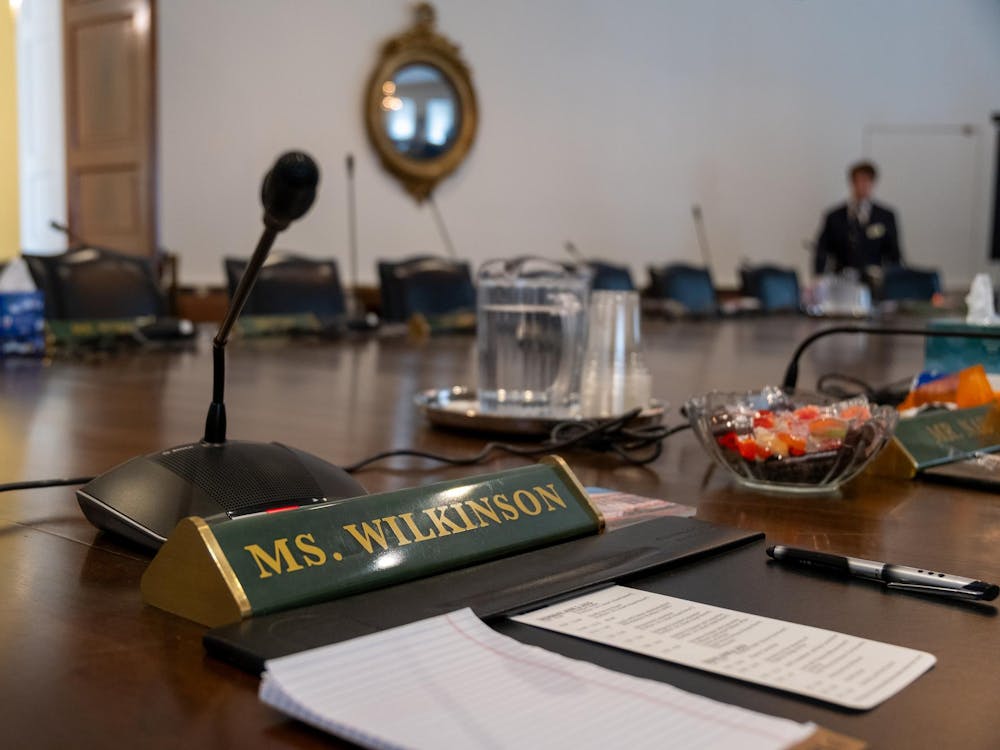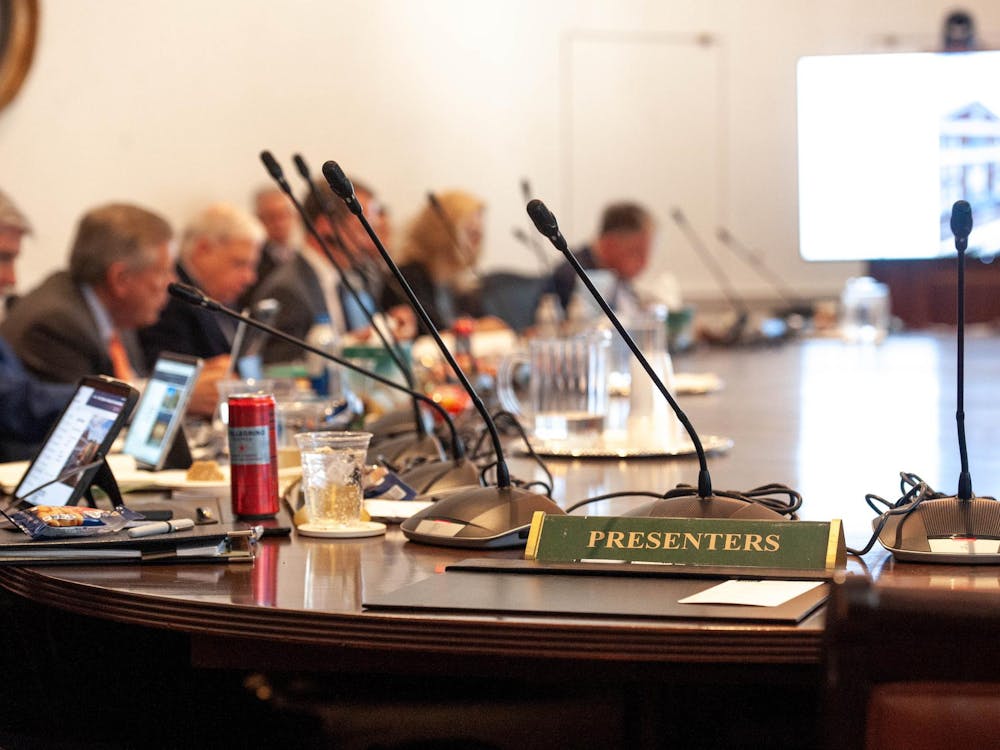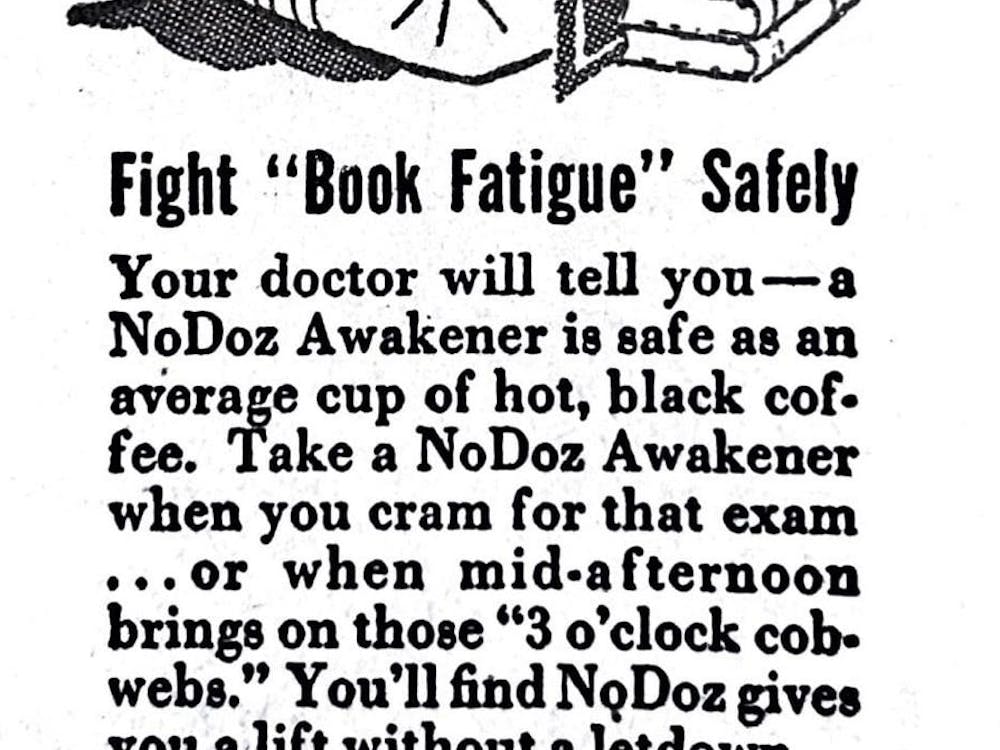Alderman Library, the heart of the University library system, houses approximately three million volumes — valued together at $104 million — and serves as a major study space for students. The library is beginning to show signs of age, however, and renovation planning is already underway.
“Alderman is a building that is well-loved, but well-used, so we really want to make it more serviceable, more beautiful,” Library Director of Communications Charlotte Morford said. “The building has good bones — it is very elegant and beautiful — but it needs some love.”
Well-loved is an apt term for the building which receives about 3,575 visitors per day during exams and more than 700,000 visits per year.
Kate Meyer, senior project manager for Facilities Management’s department of Planning and Construction, said since the library was built in 1938 there have been no major renovations of the space, despite a large 1967 addition.
“The building was built to older codes — it’s not just that the building is getting run down, it’s not up to modern code either, so it’s in need of updating,” Meyer said.
Not only have building codes changed, but the technology available to students has as well. And increasingly, students are expecting this technology in their study spaces.
University Librarian Karin Wittenborg said during almost every phase of the library’s history, renovations have been long overdue.
“The original part of the library
opened in 1938, and I would say
it was completely out of date by
1960,” University Librarian Karin
Wittenborg said. “The addition
was built in the 1960s, and it was
probably out of date in 20 years.
“The original part of the library opened in 1938, and I would say it was completely out of date by 1960,” Wittenborg said. “The addition was built in the 1960s, and it was probably out of date in 20 years.”
Planning for the renovations requires more than simply looking at the needs of current students, Morford said.
“The overall approach is to equip the library to serve not only the current generation of students, but the next 50 years of students as well,” Morford said. “There’s so much change that we have to think about the present and the future at the same time, without knowing what the future holds.”
What are students looking for in a modern library?
“One thing I’ve learned from working with students is that there is no unanimity on what spaces they want,” Wittenborg said. “They want different kinds of spaces for different kinds of activities, so if they are working alone, studying for an exam, or writing a paper, they may want one kind of space, but if they are working on a group project, they want a different kind of space.”
Fourth-year College student Jane Richards said she values a balance between public meeting space and electronic resources, as well as quieter areas.
“I think it’s really important to have the top floor be a
good group meeting space – a place to interact with a
lot of people,” Richards said.
“I think it’s really important to have the top floor of the library be a good group meeting space — a place to interact with a lot of people with good internet access, lots of outlets for chargers and stuff like that,” Richards said. “But having quiet spaces to go to is really important, too.”
First-year College student Holly Stevens said she would like to see the creation of more open seating through the renovations.
“[Alderman] is one of my favorite libraries because they have lots of cool chairs — it’s a very fun environment,” Stevens said. “I would take out some of the stacks in favor of more open seating, because I think that students value the open seating more than the closed area.”
Student Planning Involvement
The library system has developed a strategy for reaching out to the University community to ensure the renovation makes the best use of space and resources, Meyer said.
“We will do a series of different types of engagements, investigations and some one-on-one interviews with key administrators, like the head librarian,” Meyer said. “We also plan to have outreach with general faculty, students and staff, and that may take the form of workshops or questionnaires.”
In some ways, outreach has already begun.
Last year, an undergraduate study was conducted by the Office of the Provost which received about 1,400 responses, Morford said.
“[The responses] strongly indicated that quiet spaces to study are most important to students, so we’re using that information to inform both our immediate plans and the upcoming planning for the Alderman renewal,” Morford said. “We use the feedback from the survey to add to decisions about collections, spaces, hours, and the website as well.”
Stalled Renovations
Unsurprisingly, the largest roadblock to beginning renovations is a lack of funding.
“It has been on our request list to the state for money for several years now, but it generally does take time to get money for a project of this size,” Meyer said. “We can’t start until the state gives us money, so we are held hostage by that.”
The Library renovation request for $120 million is listed as the University’s second priority for state funding among academic division proposals, Meyer said, after the Gilmer Hall-Chemistry Building request.
A lack of funds, however, has not totally impeded progress toward renovation.
The library system is currently working with an architectural firm which will assess the building’s components and map out options, Morford said.
When renovations begin, they will
likely be performed in phases and
the entire library would remain at
least partially open, Meyer said.
Meyer assures veteran visitors that when renovations do begin, they will likely proceed in phases, and the library will not be entirely shuttered.
“We can do it in phases, but inevitably, that makes it take longer,” Meyer said. “With New Cabell, we were able to do two two-and-a-half year phases, but we have to figure out what length phase would work best in the library.”
Morford agrees specifics are, right now, ambiguous.
“The timeline is going to be determined by a complex planning and funding process, so I can’t definitively say when it will happen,” Morford said. “The final design will be a very strong collaboration between the Office of the Provost, the Office of the University Architect, Facilities Management, and the library.”
A Library’s Role: Print vs. Electronic Media
Questions central to renovation discussions include the expanding role electronic media plays in the future of higher education and the unclear place of physical materials.
Contrary to popular conception, many students still do check out volumes from the library. This past fiscal year, 156,774 print materials were checked out, Morford said.
But that figure is much smaller than the 4.7 million uses of electronic resources during the same period.
Second-year College student Niki Shumaker said she has checked out books from the stacks a couple times, but turns to online resources more often.
“I’ve used them few times as sources for research papers, but I generally use more resources from online,” Shumaker said. “The books are helpful, but I don’t use them often.”
Morford said faculty often request that the library purchase certain materials, through both interlibrary loans and the online request form. This past fiscal year, the library received 4,500 requests from faculty to obtain physical media, totaling approximately $237,000 worth of materials.
The relative frequency of electronic resource use compared to the use of print materials is reflected in library spending practices. The library spent $5.1 million on electronic materials in the last fiscal year, while spending only $2.2 million on printed materials.
“The students and faculty tell us that having books
around them gives an aura of gravitas to being
there,” Wittenborg said.
But beyond the informational value of print materials, there is a certain intrinsic value associated with the books in libraries, Wittenborg said.
“The students and faculty tell us that having books around them gives an aura of gravitas to being there,” Wittenborg said. “We don’t want this building to look like it could be an office building or a computer lab.”








